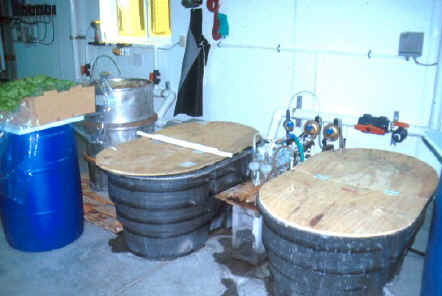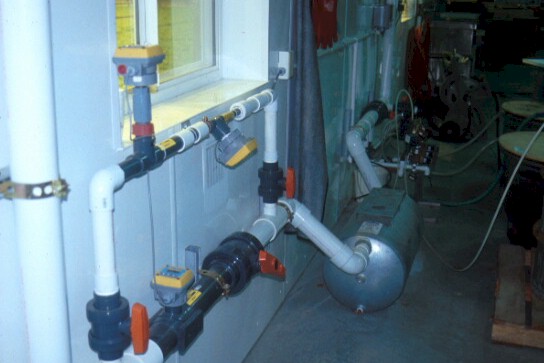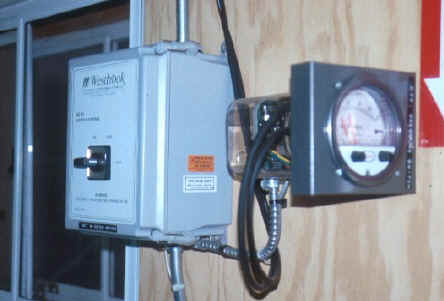 |
The fertigation system uses an A and B stock
tanks (larger black tanks in the foreground) in addition to an acid (nitric
acid) tank (metal barrel to the left). Concentrated nutrient solution
stocks are kept in tanks A and B. Mixing these stocks would likely result
in precipitation, making the fertilizer unavailable to the plants.
|
 |
The recirculating nutrient solution is
checked with an EC (electrical conductivity) and pH sensor (top two
sensors). The measurements are used to adjust the frequency of the
fertilizer injection. In addition, a flow meter (bottom sensor) is
installed to measure the flow rate of the nutrient solution flowing
through the fertigation station. |
 |
A flow meter in the oxygen
supply line allows for adjustment of the amount of oxygen gas flowing into
the recirculating nutrient solution. Each pond recirculation system is
equipped with such a flow meter. |
 |
A porous, stainless steel sparger is
installed in the nutrient solution recirculation system of each pond.
Oxygen gas is forced through the sparger, which releases tiny bubbles of
oxygen into the nutrient solution as it is pumped around. These tiny
bubbles dissolve quickly into the nutrient solution maintaining the
appropriate dissolved oxygen concentration (4 - 8 mg/L). |

|
The opening position of the
ventilation window is controlled by a so-called differential pressure
switch. The switch measures the static pressure difference between the
inside and outside air in the greenhouse. By regulating the position of
the vent window, a constant pressure difference can be maintained,
allowing for sufficient airspeed of the incoming air and ensuring proper
mixing with the greenhouse air. |
|
Back
to FH Greenhouse |